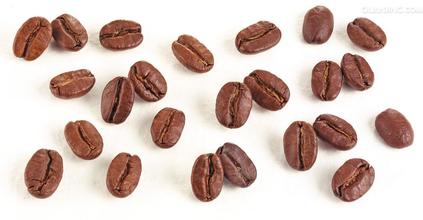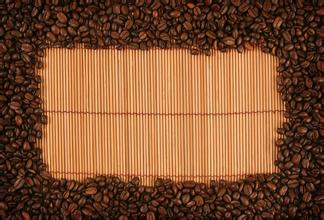The treatment process and spread of raw coffee beans
Roasted coffee beans appeared on the market for the first time-1865 (Pittsburgh, USA)
Coffee trees can usually grow up to 5-10 meters tall. The older the coffee tree is, the fewer branches it will have, but the more leaves and fruits it will have. Coffee trees usually begin to bear fruit three to four years after planting. The number of years in which coffee trees produce fruit varies from 10 to 20 years, depending on the region and tree species planted.
Coffee trees are usually planted in rows a few inches apart. Some coffee farmers grow coffee under other high cash crops, or on the other side of the mountain, because coffee requires a specific growing environment. Arabica coffee trees can only grow at 15-24 ℃, while Robusta coffee trees can grow at 30 ℃. The average annual rainfall is 150-300mm. In the fruit growth stage, a large amount of rainfall is conducive to growth, but in the fruit ripening stage, a small amount of rainfall is better. Because the climate of the northern and southern hemispheres is different, the harvest time of coffee beans is also different. In some places, coffee beans are harvested all year round. When the coffee berries are ripe, they are usually harvested by hand. In some places, only the fully ripe berries are picked, while others are all picked from a single branch. The former is called "handpicked" and the latter is called "strip-picking". Because the ripening time of coffee berries is not consistent, so the harvest is likely to be divided into several times, the duration will be very long, so harvesting is also the largest part of manpower investment.
The harvested coffee berries need further treatment, usually in two ways.
One is water washing, which is popular in Central America and parts of Africa; freshly harvested coffee berries separate the peel from the beans manually or mechanically, and then soak in water for 2 to 3 days. In this way, the pulp and sticky matter attached to the coffee beans will be removed. Then comes the cleaning and drying process, which can be done in the natural sun or by machine.
One is: solarization, which is more economical in Brazil and most African countries. After removing twigs and other debris, the coffee berries are spread out in the sun for 2 to 3 weeks, turning repeatedly to make the berries drier until the berries fall off the coffee beans.
When the water content of the coffee beans is reduced to about 13%, the coffee beans will be bagged and cooked in the warehouse for 1 to 3 months.
Finally, it can be sold.

Important Notice :
前街咖啡 FrontStreet Coffee has moved to new addredd:
FrontStreet Coffee Address: 315,Donghua East Road,GuangZhou
Tel:020 38364473
- Prev

Introduction to the regional treatment of Bolivian coffee beans
Bolivia is not a big producer of acidity (brightness) (1-10): 8.8 taste (layering) (1-10): 8.6 taste (alcohol thickness) (1-5): 2.9 aftertaste (residue) (1-10): 8.5 balance (1-5): 0 base score (50): 50 total score (maximum 100): 86.1 strength / main attributes: light intensity / exquisite flowers
- Next

A brief introduction to the geographical characteristics of raw coffee beans in Colombia
The suitable climate in Colombia provides a real natural pasture for coffee. But people there do not deliberately emphasize their excellent growth conditions, they are more willing to hear people praise the superior taste of their coffee beans. They don't like to be judged that Colombian coffee's reputation depends on its unique location, and they want people to see them work hard to pay.
Related
- Does Rose Summer choose Blue, Green or Red? Detailed explanation of Rose Summer Coffee plots and Classification in Panamanian Jade Manor
- What is the difference between the origin, producing area, processing plant, cooperative and manor of coffee beans?
- How fine does the espresso powder fit? how to grind the espresso?
- Sca coffee roasting degree color card coffee roasting degree 8 roasting color values what do you mean?
- The practice of lattes: how to make lattes at home
- Introduction to Indonesian Fine Coffee beans-- Java Coffee producing area of Indonesian Arabica Coffee
- How much will the flavor of light and medium roasted rose summer be expressed? What baking level is rose summer suitable for?
- Introduction to the characteristics of washing, sun-drying or wet-planing coffee commonly used in Mantenin, Indonesia
- Price characteristics of Arabica Coffee Bean Starbucks introduction to Manning Coffee Bean Taste producing area Variety Manor
- What is the authentic Yega flavor? What are the flavor characteristics of the really excellent Yejasuffi coffee beans?

